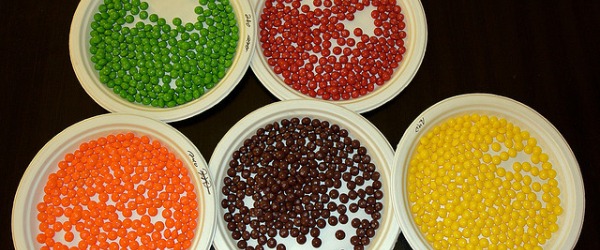The focus of my grad studies and postdoctoral research has been the analysis of proteins regulated by reversible protein phosphorylation. However, the number of unique facets in which protein phosphorylation can be studied is astounding, and is diverse as any niche of the biosciences. This article is the first in a series that will give you a run-through of some of the many different tools you can use for studying protein phosphorylation.
You can, of course, study the enzymes doing the phosphorylation/dephosphorylation, protein kinases or protein phosphatases, or the target proteins that are being phosphorylated or dephosphorylated. Each needs a different approach, so I’ll talk about both here…
Studying the Target protein
I personally like studying the protein targets of phosphorylation, since they’re the ones being phosphorylated, and by extension, the ones being regulated. If they’re being regulated, then, there must be some physiological significance as to why. So, what can we do to study phosphorylation of a target protein?
Enzyme kinetic parameters: If you’re lucky enough to have a target protein of interest that’s an enzyme with assayable catalytic activity, then you can see how that activity changes from a situation when you suspect your enzyme to be phosphorylated to a situation when you expect it to be dephosphorylated. Does the maximal rate of reaction (Vmax) increase or decrease? How about the enzyme’s affinity for its substrates (Km)? Does the activity versus substrate concentration profile shift at all- for instance, from a hyperbolic to a sigmoidal shape? Does the enzyme respond to the same activators and/or inhibitors in the same way? How does it function over a given pH range in its various phosphorylation states? The list goes on…
Detection by molecular imaging: There are also options for detecting phosphorylation on proteins that are completely independent of enzyme activity- in fact many variations of this next method preclude assaying for activity. Whether you use denaturing or non-denaturing methods, you can run your protein of interest- alone, or present in a complex mixture of proteins- out on a gel and try to detect it at the correct molecular weight. What can you use to detect it- a more appropriate question would be to ask what you can’t use! Nowadays, there are tons of commercially-available stains that are specific for phosphoproteins. Alternatively, for greater specificity and sensitivity, there are even lists of phospho-specific antibodies for probing your blotted membranes.
Mass Spec: This is essentially deserving of an entire post in itself, based on its diversity and complexity. Mass spectrometry, outfitted with a variety of accoutrements, is becoming an important tool in the characterizations of post-translational modifications on proteins, including protein phosphorylation. Phosphoprotein stains and antibodies can be a very useful tool in telling you whether your protein is phosphorylated, but not all of them will necessarily tell you where in the entire protein the phosphorylation is taking place- which site(s) in particular. By dissecting proteins in a mass spec, you have the ability to scan through peptide fragment after peptide fragment, scrutinizing which are different due to phosphates present on certain serines, threonines, tyrosines, and other phosphorylatable amino acids, throughout your protein’s structure.
Studying the kinases and phosphatases
Instead of – or, in addition to looking at the target protein, depending on the scope and objectives of your research and how keen you are- you can look at the protein kinases that are putting (a) phosphate group(s) on proteins, or the protein phosphatases taking it (them) off.
Kinases
Activity: Protein kinases are a world of fun in themselves, because right off the bat, they have the assayable catalytic activity to play with. The methods and tools for assaying kinase activity seem to multiply daily, and I myself have delved into only a few of the wide range available. You can measure activity using your protein kinase to phosphorylate a substrate radiometrically- using a radioisotope, 32P-alpha-ATP, and transferring that hot terminal phosphate from ATP to the substrate. Here, again, what substrate are you using? A short peptide? A full-length protein? Will you spot it onto phosphocellulose paper, or precipitate it onto filter paper, or run it though acrylamide in SDS-PAGE? Alternatively, you can use methods that don’t even require those hazardous, inconvenient radioisotopes. I have used real-time assays that rely on the fluorescence of an unnatural amino acid, as well as endpoint assays that are based on the fluorescence polarization of an immobilized metal affinity peptide.
Kinases are targets, too! Anyone who knows about the introductory concepts of signal transduction knows that there isn’t just a signal kinase between a receptor and metabolic enzyme- there are thousands of protein kinases participating in extensive phosphorylation cascades. A kinase phosphorylates a second kinase, which in turn may or may not phosphorylate a third kinase, depending on whether its initial phosphorylation activated or inactivated it. And so on…
Phosphatases
A strange bunch! Whereas there are thousands of protein kinases, how many protein phosphatases are there? A few dozen, give or take? They seem to be much more promiscuous, in that they have broader substrate specificity. They are regulated by very different mechanisms, such as accessory proteins they associate with. Because they’re such an interesting niche, we’ll look at them more later.
Now that we’ve seen the candidates one can study when considering protein phosphorylation, next time, we’ll take a closer look at some of the tools that we only just skimmed over here.





